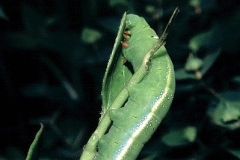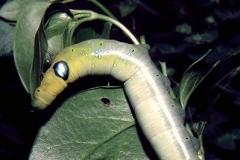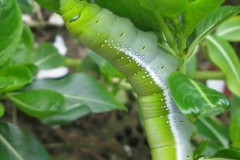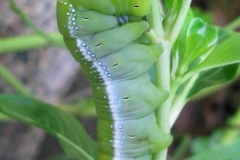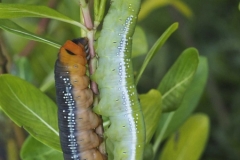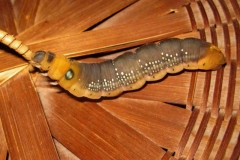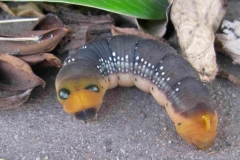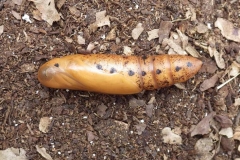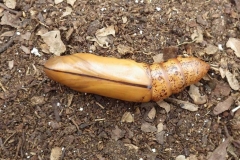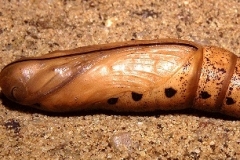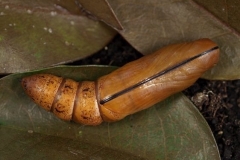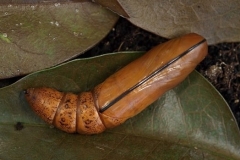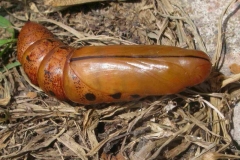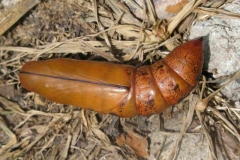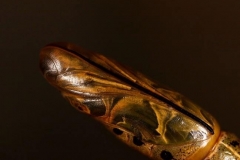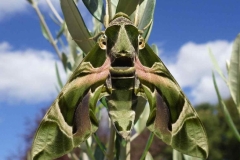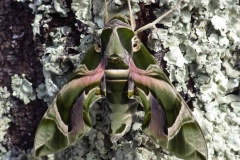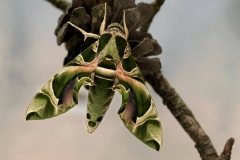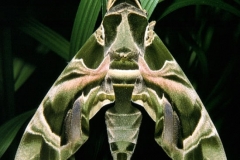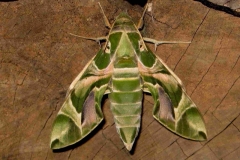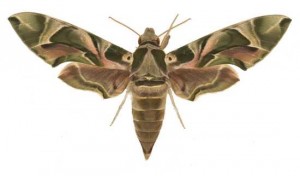
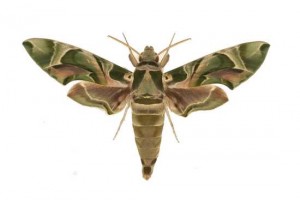
Daphnis nerii (Linnaeus, 1758)
Sphinx nerii Linnaeus, 1758, Syst. NAT. (Edn 10) 1: 490.
Type locality: not specified[Europe].
The Sphinx of the Oleander
English: Oleander Hawkmoth; German: Oleanderschwarmer; Castilian: esfinge of the Oleander
Taxonomy
The only species that looks like him is Daphnis kitchingi Hanif & Melichar, 2014 endemic to Madagascar, species that co-exists with d. nerii. The ground from the top of the forewings of d. kitchingi is identical to that of d. nerii, but a clear difference to separate the two insects: the dark green basal beach that adorns this wing on 8 to 10 mm is regularly rounded on its distal zone, frankly returning back towards the costa. D. nerii, this beach is logically more clear, but mostly she joined the costa in curving doubly, first backward and then forward.
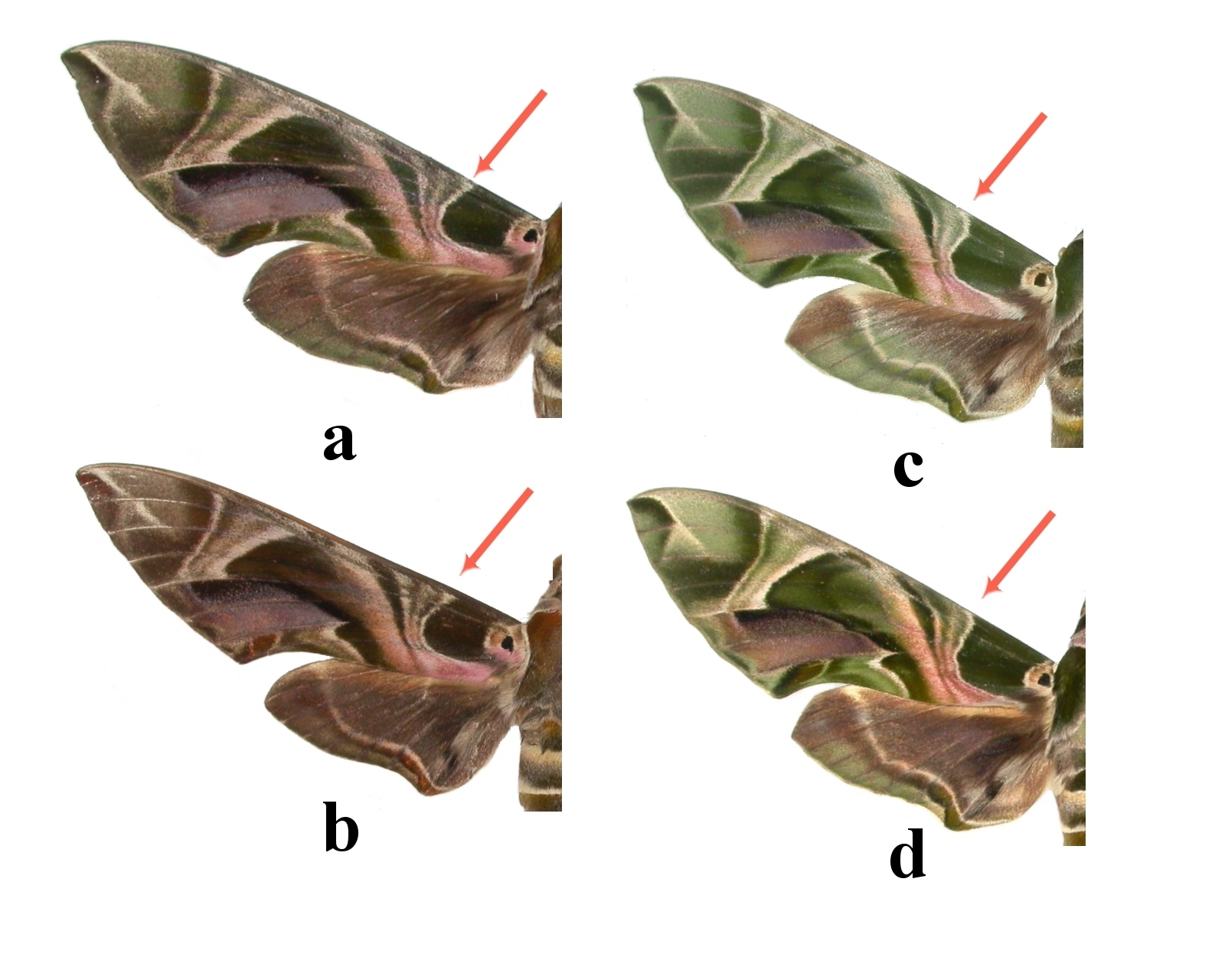
Distribution
World: It is very difficult to identify the actual distribution of the migrant. On separate areas where he is resident and reproduces, and areas he won regularly where occasionally during its migratory flights, but where it can settle permanently, even if it produces a generation.
Properly installed in Africa, Madagascar, Réunion, the Arabian peninsula, the Mediterranean, the Middle East, the Afghanistan, and Turkmenistan. From there, he won the Pakistan and India in the South and centre, then East South Asia, (Thailand, Laos (Alex Teynié in press), Viet Nam, Cambodia), southern China and the Philippines. It is known from the Japan, and Hawaii. It also flies in the large islands of the probe (Borneo, Sumatra)
France: potentially everywhere, but much more common along the Mediterranean.
Host plants
Nerium oleander (major plant), but also Vinca, Vitis, Gardenia, Asclepias, Jasminum, Trachelospermum, Amsonia, Carissa, Tabernaemontana, Mangifera, Rhazya, Adenium, Catharanthus, Ipomoea and Thevetia (Pittaway).
See this splendour in France is a unique and rare moment. D. nerii is a migrant from Africa, where it is extremely common. Its range is considerable, and obviously this powerful sailboat is gaining ground since he recently moved to Hawaii. I collected it in the Philippines, on the island of Luzon and Jacques Hecq (com. pers.) recently pointed me a screenshot in French Guiana. If the fact was proven, it would be the first reporting of this species in the new world.
Daphnis nerii arrived in France in May-June, producing a second generation especially in the Mediterranean. According to Pittaway (1993, 115) these are two migratory waves that reach our country, one in June and the other in August.
This means that it is possible to find d. nerii everywhere, but that this meeting is exceptional. However, it is clear that live along the Mediterranean coast offers the maximum chance to get acquainted with the Sphinx of the Oleander. There, in the region of Marseille, oleander beds which includes its Caterpillar every year. To be verified.
I have found this species only once in France, to same Agen, in the courtyard of the Lycée Jean Baptiste de Baudre (47) in June 1996.
Its Caterpillar consumes mainly flowers and young leaves of Oleander (Nerium oleander) but it is sensible accept other plants such as Vinca, Jasminum, Ipomea... Tony Pittaway (1993, 116) gives an even longer list. As I already said, I distrust many of these huge lists of plants, often repeated publication in publication but never verified. There is a difference between what a caterpillar nibbles and enabling it to complete its cycle.
In my opinion, it must be rather difficult to complete a farm of d. nerii on Vinca, and for individuals of normal size, even if it is actually of an Apocynaceae. On the other hand, it is well known that it quite easily accepts the PRIVET (Ligustrum sp.) in captivity.
The larvae of d. nerii is developing a rudimentary cocoon to the surface of the ground, plant debris and leaves. The outbreak is extremely fast, in less than 4 weeks. This pupa does not support the wet and cold. 10 ° below it dies quickly which will make difficult the sedentarization of the species in France. However it seems permanently installed in Sicily, Cyprus and Crete (Pittaway 1993, 117).
